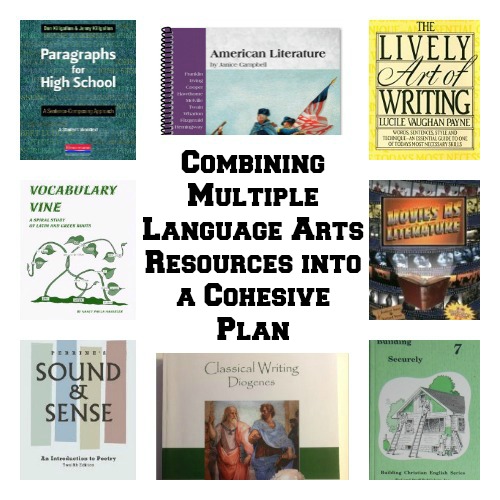 As eclectic homeschoolers, it is common for me to take bits and pieces of one thing and combine it with something else to create something that better suits my child. So this year when we started running into issues with a curriculum, I took a step back and looked at my options so I could figure out what to do.
As eclectic homeschoolers, it is common for me to take bits and pieces of one thing and combine it with something else to create something that better suits my child. So this year when we started running into issues with a curriculum, I took a step back and looked at my options so I could figure out what to do.
As my son is on the cusp of starting high school, writing is the focus of our language arts studies. I wanted writing instruction to be very thorough as well as cohesive. I had several resources on hand that I decided to use in some manner. I purchased a few other things to fill in my son’s study. All in all, we are using a large amount of resources for one year of study. Some of them will be used more than one year too, but only a few will be used in their entirety.
While multiple resources for one school year may seem like an expensive way to go, most of the things I choose are long-term investments because I will use them for multiple children. And those children will use many of them for multiple years. The Excellence in Literature series, for example, will be used for at least 5 years for each child so that works out to 15 years of use. The only consumable items we are using are free ones.
Because I mashed together different resources, I had to let go of preconceived notions about when we will be finished with the plan. This is one of the pitfalls of going rouge. There are no nice 180 lessons all laid out, but I’m fine with it if we don’t finish by the end of the school year. Whenever I’ve tried planning out compacted and multiple resources into different lessons, I’m always off base because I over or under estimate how long something is supposed to take. What has worked best is to list all the assignments in chronological order. When it is time to study language arts, we just look at the list to see what is next and do that.
Here is what I’m combining for my 8th grader.
I usually don’t mesh this many different curricula choices, but I had many of these on hand already so I’m putting them to use.
Movies as Literature
What I like about it: The discussion guide helps a child think through literary elements and concepts related to cinematography.
What I don’t like about it: It can be made pretty schooly with the writing assignments and the accompanying workbook that we do not have or use.
How we use it: We watch a movie together once without stopping. The next time we watch the first half with the discussion guide open and my finger on the pause button. We do the second half later on so each movie takes about 6 hours in total. We probably do about 6 movies in a school year and spread the book over 2 years.
Classical Writing Diogenes
What I like about it: The classical model for writing is challenging and quite different from modern writing curriculum. It digs deeper into language and helps the child develop logical and cohesive writing. I think my favorite part is where the student is to analyze and discuss essays from The Greats.
What I don’t like about it: There are lots of exercises that require labeling, sorting, and writing that my son would find to be busywork. This isn’t to say that the curriculum would have busywork for everyone. I think busywork is work that doesn’t help the student learn and that would be different for every child. Another thing I don’t like about it is that the curriculum isn’t too easy to use and it doesn’t have a teacher’s guide to check work. Even though a classical approach to writing is new to me, I am pretty comfortable with guiding the writing process so it works for us.
How we use it: I’ve pared it down greatly and we are basically only doing the main maxim writing projects and the analysis and discussion of essays from The Greats.
Rod and Staff Grammar
What I like about it: The grammar lessons for Rod and Staff are thorough, yet gentle. It has plenty of exercises for practice of new concepts. Everything is neatly broken down into lessons and a teacher’s guide makes it easy to check work.
What I don’t like about it: It can be made extremely schooly if you use the book as intended. Even though we are Christian, some of the sample sentences are not in line with our beliefs.
How we use it: We don’t do any of the writing assignments in the book and focus only on the grammar. For each lesson I have my child read it silently and then come see me when he gets to the exercises. For the most part, he goes over these with me orally. This saves tons of time because it may take 30 minutes to write out all the answers, but it only takes 5 minutes orally.
Perrine’s Sound and Sense: An Introduction to Poetry
What I like about it: Everything! I went with the 7th edition because I could find a used teacher’s guide for a decent price. It gives over 180 poems with corresponding discussion and analysis questions. It also covers things like how to read a poem, figurative language, rhythm and meter, and much more.
What I don’t like about it: Nothing. We aren’t cutting anything out of this one.
How we use it: My son reads the assigned poems and any text and then we get together and go over the discussion questions. Before we start discussing the poem, I have him stand in front of the room and read the poem aloud, paying attention to speaking clearly and using appropriate expression. I have an instructor’s manual that provides greater insight into the poem for our discussions.
Writing the Research Paper by Winkler and McCuen-Metherell
What I like about it: It walks a student through the process of writing a research paper. It covers things like choosing a topic, writing a thesis statement, completing an outline, researching, writing, the MLA system, the APA system, and the Traditional (CMS) system.
What I don’t like about it: I went with an older edition so it doesn’t have as much information on researching through the internet as a newer edition would. It does have the 2009 MLA update though.
How we use it: When my son is completing a research paper, he uses this book as a handbook.
Vocabulary Vine
What I like about it: This curriculum covers 108 Latin and Greek roots. The little book has a list of all of the roots, their meanings, and sample words containing the roots.
What I don’t like about it: It requires you to make flashcards using the list. In other words, it isn’t open and go.
How we use it: My son does the entire root list on Quizlet. If you are not familiar with Quizlet, it has virtual flashcards that can be used in several different ways to learn the roots. He’ll also be using Quizlet for Science Roots later this school year.
Excellence in Literature by Janice Campbell
What I like about it: Excellence in Literature is a series of 5 spiral bound books that explore literature. Selected classic works are expanded upon in these books. It provides internet links for more information about the historical context, the author, poetry related to the work, audio and video related to the book, as well as other fine arts about the book. I’m using most of her literature suggestions as part of our reading list. The layout of the books allow you to jump around so you don’t have to complete the books in a specified order.
What I don’t like about it: The recommended honors texts are not covered in the books. Only the standard literature choices have information and internet links.
How we use it: When my son finishes reading a book that is in one of the Excellence in Literature guides, he spends an hour or two exploring the internet links about the book. It has essay assignments for the different books, but we are not doing that part this school year.
Killgallon’s Paragraphs for High School
What I like about it: It teaches the child how to create varied and interesting sentences. Selections from classic and modern literature are given as models for the student to imitate. It has been a good tool for creative expression too. I’ve used Killgallon’s books before and have been impressed at what they have helped my children write. It also provides examples of grammar in context because it shows how using something like an appositive or a participle can enhance writing.
What I don’t like about it: Nothing. I’m a fan.
How we use it: I assign my child a couple pages or an activity and then go over it when he is done. The book is relatively easy to use and we go through it chronologically. There is no teacher’s edition, but one isn’t really needed.
The Lively Art of Writing
What I like about it: This one is new to us. We started on the workbook and decided to wait until we had the main book (it should arrive next week). The workbook without the main book was good, but we could tell that we were missing some instruction. It covers modern essay writing and provides many opportunities to write essays. It has the student writing thesis statements, organizing ideas, making arguments, and more. The workbook was put together by some homeschoolers and shared online for FREE! A new Lively Art of Writing book can be found on Amazon for only $6 so this was an inexpensive addition to our studies.
What I don’t like about it: Nothing at the moment, but we haven’t used it very much yet. I suspect we will go through it step by step.
How we use it: I’m having my son read the Lively Art of Writing book and then do some pages in the workbook. The chapters in the book correspond with sections in the workbook.
I’ve combined all of those resources into something rather simple to use. I just created a big list that we will go through chronologically. When it is time for my son to spend time on English, he does 2-3 items on the list.
Here is a small sample of our list from later this school year:
Lively Art of Writing – pg 30-32 in workbook
Classical Writing Maxim Unit 2 Writing Project – example, epilogue
Sound and Sense Poetry: Poems #52 and #53
Killgallon – pg 47-49
Rod and Staff Grammar – Adjectives – Lesson 68
Sound and Sense Poetry: Poems #54 and #55
Science Roots – 20 minutes on Quizlet
Lively Art of Writing – pg 33-35
CW Maxim Unit 2 Writing Project – Review rough draft
Sound and Sense Poetry: Poems #56 and #57
Killgallon – pg 50-55
Rod and Staff Grammar – Adjectives – Lesson 69
Sound and Sense Poetry – #58 and #59
Classical Writing Maxim Unit 3 Lesson 1-2 (Read only)
Science Roots – 20 minutes on Quizlet
Lively Art of Writing – pg 36-37
Sound and Sense Poetry – #60 and #61
Classical Writing Maxim Unit 3 Lesson 3 (write paragraph)
All together there are about 300 items on the list, so hitting 2-3 items at a time should put us in the ballpark of finishing by the end of the school year. He doesn’t spend time on English every day though. Movies as Literature and Excellence in Literature are used periodically so they aren’t on the list. We just forgo the list when we use them.
We’ve been doing this mashed together language arts curriculum for a couple weeks now and it is going quite well. Have you used any of these resources? Please share your thoughts in the comments.
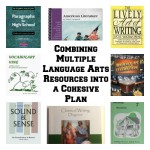
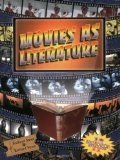
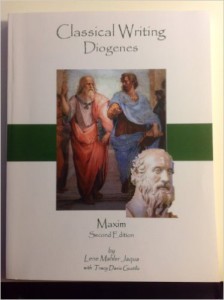
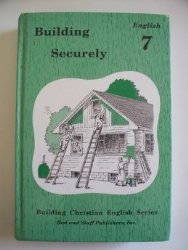
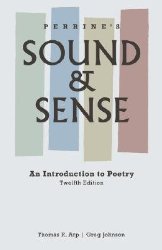
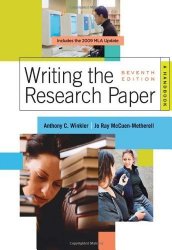
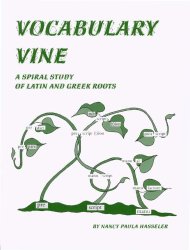

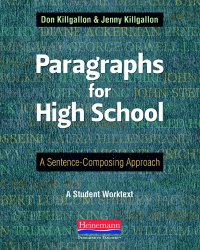
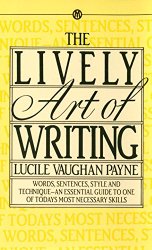



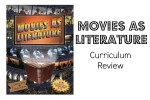

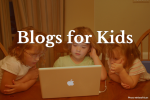
It’s a relief to hear that someone else is using multiple resources for LA. I don’t feel as alone now! We aren’t using what you’re using, but I might add a few that you mentioned above! This year, I’m using The Word Snoop (finished), Grammar Land (finished), Institute of Excellence in Writing, Life of Fred Language arts, Learning Language Arts through Literature, and my own list of Latin/Greek roots, but I think I’ll add in the book you mention above. Sometimes I’ll focus on one resource and finish it off before continuing on, and sometimes I’ll intermix different resources for different weeks. I usually don’t switch within a week though, although Latin and Greek roots I just do once per week, regardless of what else we’re doing for LA.
We are loving Word Snoop! My kids don’t seem to fit into an all-in-one LA curriculum very well. There was always something I had to tweak so I figured that I might as well choose the best bits and put them all together.